Brand awareness is something all businesses strive for. After all, being well-known among your target audience can significantly boost your brand to the next level.
But there’s a difference between being famous and infamous.
In other words, not all brand awareness is positive. Too much negativity (and sometimes even the slightest amount) can wreak havoc on your business’ reputation.
That’s why strategic PR campaigns are essential to success.
Your goal? Spreading brand awareness through your PR campaigns while keeping your overall reputation positive.
But, just like with marketing campaigns, you need to keep a close eye on your PR campaigns. This means, keeping track of its success or failure and adjusting when needed to get the best results.
Unfortunately, tracking the impact of a PR campaign isn’t easy. It’s not the same as making sure your marketing campaigns are reducing your bounce rates and boosting your conversion rates. Many KPIs for brand awareness and reputation aren’t so exact.
If you’re wondering how to measure your PR campaign’s impact on brand awareness and reputation, you’ve come to the right place. In today’s article, we’re taking a deep dive into that subject, providing you with actionable advice so you can keep track of these important metrics.
How do PR campaigns control brand reputation and awareness?
Plain and simple: With a strong PR campaign, businesses can control the narrative around their brands. They do this by sharing company success stories, pushing out user-generated content, and working with the media to create positive news articles.
Articles in the media are particularly effective at swinging public opinion. Since they’re coming from an objective third source, they’re generally more trusted than corporate messaging.
User-generated content can also sway the public’s opinion, for good or bad. While stellar reviews and inspiring customer success stories can shine a light on your business, significant complaints or outright horror stories can drag your reputation through the mud.
Take a look at the famous (or infamous) example of the restaurant Cracker Barrel and “Brad’s Wife.”

This simple social media post spiraled out of control for the restaurant franchise brand. Social media trolls came out of the woodwork to flame every post that Cracker Barrel made. Even the franchise’s responses to positive reviews gave users a chance to demand answers from the brand:
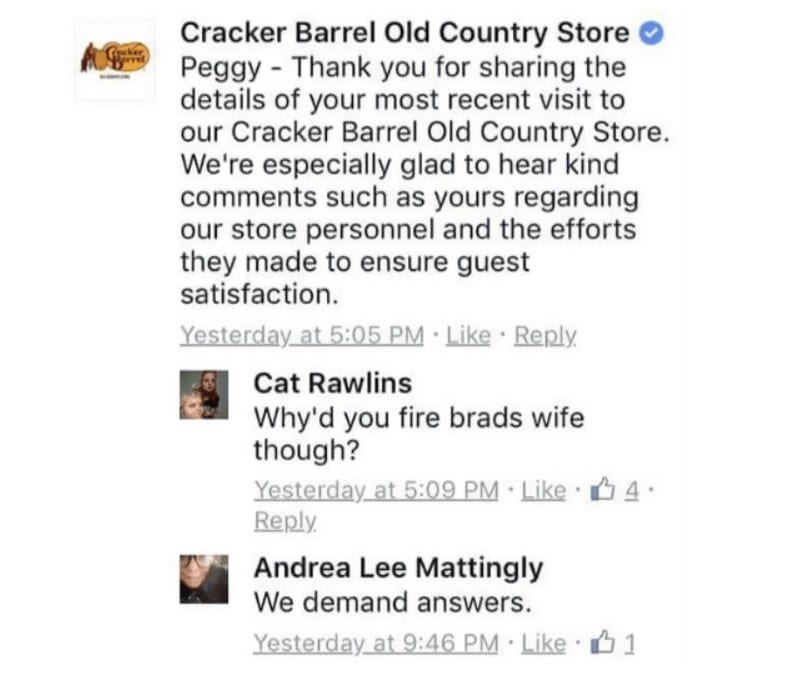
This PR nightmare went on for months. That’s why controlling the narrative around your brand is vital.
One way to do this is to leverage competitor popularity to boost brand reputation and awareness. An effective tactic is to incorporate the name of a popular competitor into PR campaigns and provide your product or service as an alternative, and better solution.
For instance, if you run a SaaS brand that offers remote support alternatives to TeamViewer, you could capitalize on TeamViewer’s established reputation to increase your software’s popularity.
In this case, a simple solution could be to write blog posts and other informative content pieces that compare remote support software options, beyond TeamViewer:
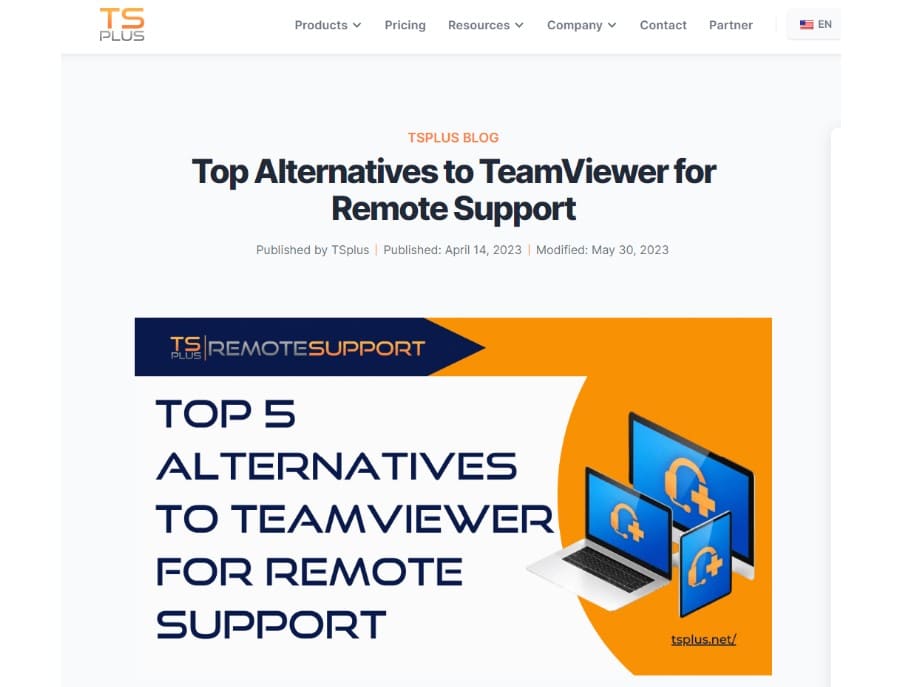
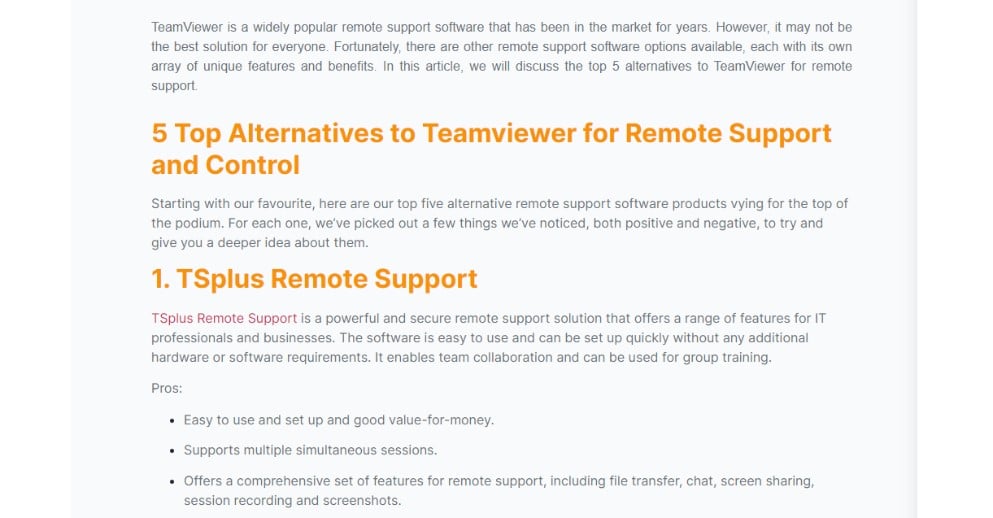
In the options included, you’d shine the light on your software and other relevant SaaS brands in your niche. Of course, you’d need to position yours as the best, most valuable option to encourage more eyes on it.
When executed strategically, this tactic can bridge the familiar and the new, enticing potential customers to explore other options.
How can you measure your PR campaign’s impact on brand awareness and reputation?
Now that you understand how PR campaigns can make a difference in a brand’s reputation and awareness, let’s discuss how to gauge their effectiveness.
Use automation tools
While some of the KPIs in this article aren’t traditionally measurable, some automation platforms can help you gather the information you need.
For example, CRM software monitors communications and can help you deepen relationships with your leads and clients. You can set KPIs using your CRM software data to measure how well your PR campaign is going. This reporting tool can also include a list of brand mentions and records of your team’s interactions with the public so you can infuse them in campaigns and monitor your reputation.
And speaking of monitoring your reputation …
A social media monitoring tool can help you find and compile your social mentions. This software can help you monitor public conversations surrounding your brand. A tool like this is vital to saving time. Instead of cycling through each platform individually and running searches, you can get a bird’s eye view of your mentions from one centralized dashboard.
Assess the sentiment of brand mentions
We just mentioned brand mentions on social media channels. That’s important to your campaign success—if no one is talking about you, there’s no awareness about your product.
However, it’s not enough to measure the number of mentions your brand gets. You need to monitor the content of these mentions and perform a sentiment analysis. In other words, if people are talking about you, is it positive or negative? Then, you need to respond to these mentions with appreciation and kindness—and if it’s a negative mention, you also need to provide a solution.
For instance, here’s an example of a negative mention a user wrote regarding grammar-checking software giant, Grammarly:
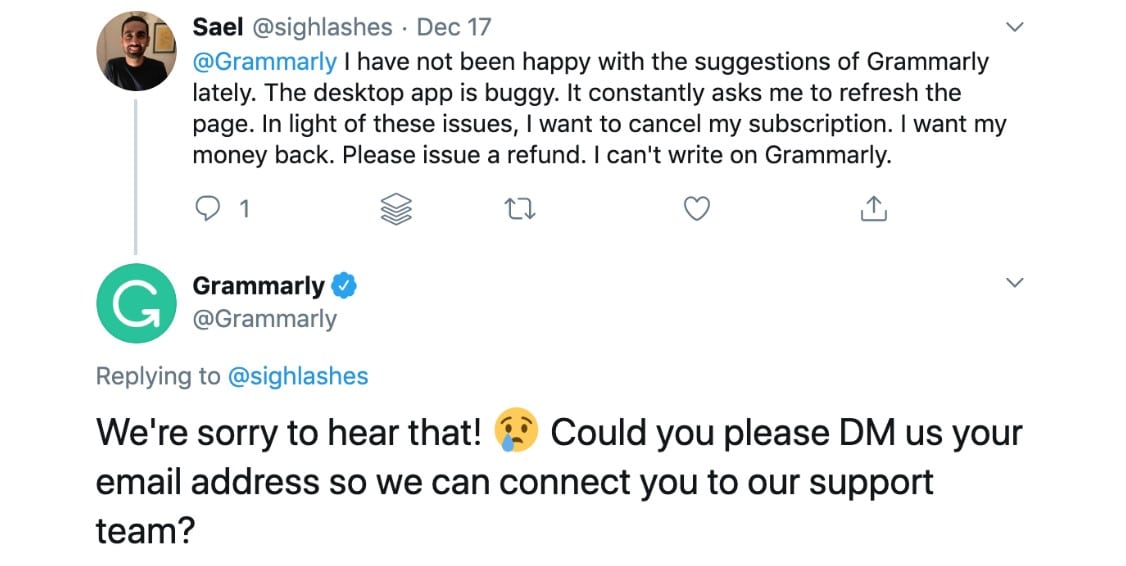
By responding to the mention directly and offering a solution, Grammarly did its best to control its PR narrative.
Of course, any brand will have a mix of good and bad mentions. Even well-respected brands like Google and Apple have their detractors. But if your PR campaign does its job, the positive mentions will outweigh the negative by a large margin.
So, yes, you need to compile your mentions, but your job doesn’t end there. Once you have them, sift through them and determine the overall mood. Use this to determine whether your PR campaign is working or not.
Seek out product reviews
Product reviews can be a key metric to help gauge your reputation. But to get a full picture of what your reviews can tell you about your PR campaign, you need to broaden your search. For instance, start by looking at different review sites. You can’t just count on reviews left on your site or via social media platforms.
For example, Google Reviews is a great place to look, as this is one of the more popular platforms.
But you should also check out industry-related review sites. Mark down any site that posts a review of your product. If that site also has a comment section, check the comments and see what people say.
If you notice a lot of negative reviews on these sites, make some changes and reach out to the site to see if they’ll give you another go. If they do, you can turn a negative mention into a positive one.
Keep track of all impressions
The number of impressions your content gets can be an excellent way to gauge brand awareness. That includes paid ads run through platforms like Google or Facebook. But it goes beyond that as well.
For example, how many organic impressions are you getting on Google? What about other search engines like Yahoo or Bing? These search engines aren’t nearly as large, but they could provide interesting data.
Then there are organic social media posts. How often are you showing up in news feeds? Are people sharing your content? If so, how many? If the answer is no, why not?
When you run PR articles with media outlets, check their impressions. While you don’t directly control their content, gauging its effectiveness and how far it travels can influence your overall awareness.
You should also check to see how many impressions your negative mentions are getting. If those impressions are far higher than your PR articles or positive reviews, then a major PR challenge is heading your way.
Monitor share of voice
Your share of voice (SOV) is the percentage of the industry-wide conversation that your brand garners. By that, we mean how many mentions are you getting within your niche compared to major competitors?
This key metric is a huge indicator of your visibility and reputation.
Let’s take a look at fast-food chains as an example.
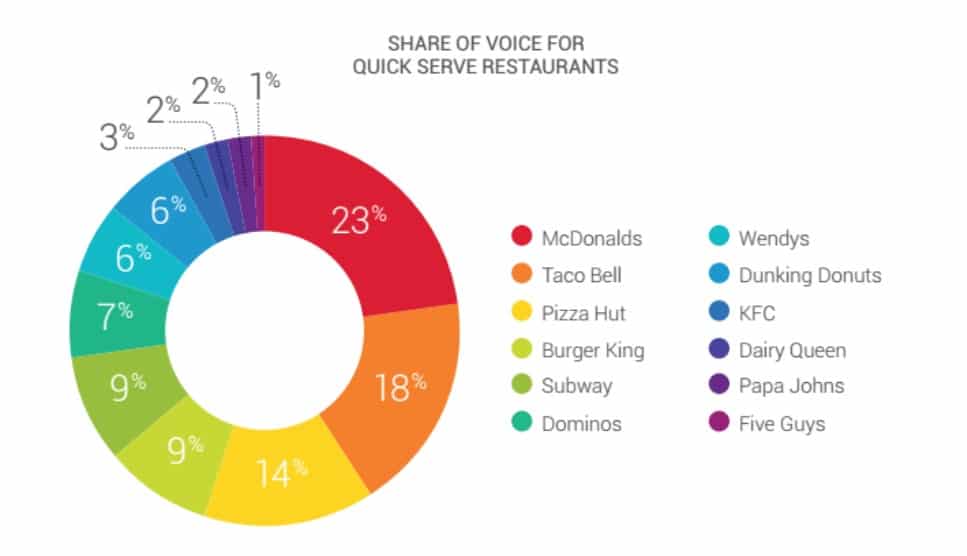
In the graph above, you can see how SOV breaks down in this industry.
McDonald’s is the clear winner with 23% of the voice. Taco Bell follows closely behind, with Pizza Hut, Burger King, and so on. At the very bottom, you see Papa John’s and Five Guys.
It might seem like those two aren’t doing well. But think about Popeye’s or Culvers. These chains aren’t even on the list. It’s better to be in last place among the measurable SOV than not in the conversation at all.
Work with a marketing agency
Of course, one way to measure your PR campaign’s effectiveness is to outsource the task completely. By working with a marketing or PR firm, you’ll receive professionally compiled reports that break down these KPIs and what they mean.
For instance, consider collaborating with an email marketing campaign agency like InboxArmy. An agency like InboxArmy can run an email campaign for you, but it can also measure the impact of PR initiatives.
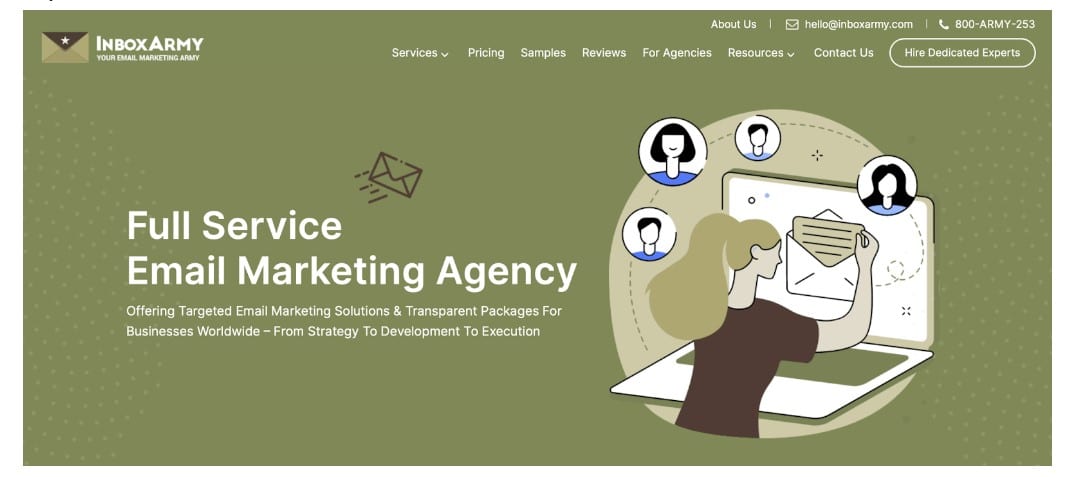
These experts offer strategic advice on properly delivering your brand’s messages and updates. They also have analytical tools to accurately monitor email subscribers’ engagement, conversions, and brand perception.
Email marketing data like this can become a vital indicator of the effectiveness of your PR efforts as it can help you understand which strategies enhance your brand’s reputation and exposure.
You can also get information on social conversations by working with a social media measurement partner. For instance, SEO and PPC firms can give you data on impressions while reporting on search rankings.
Then, PR firms roll out these strategies according to your business goals and report back to you.
Wrap up
And there you have it!
While measuring the impact of your public relations campaign may not be straightforward, by
following the advice listed above, you can gauge how well it’s performing. You can then make any necessary adjustments for maximum results on future campaigns.
That’s it for now, PR professionals.
Here’s to your success!








